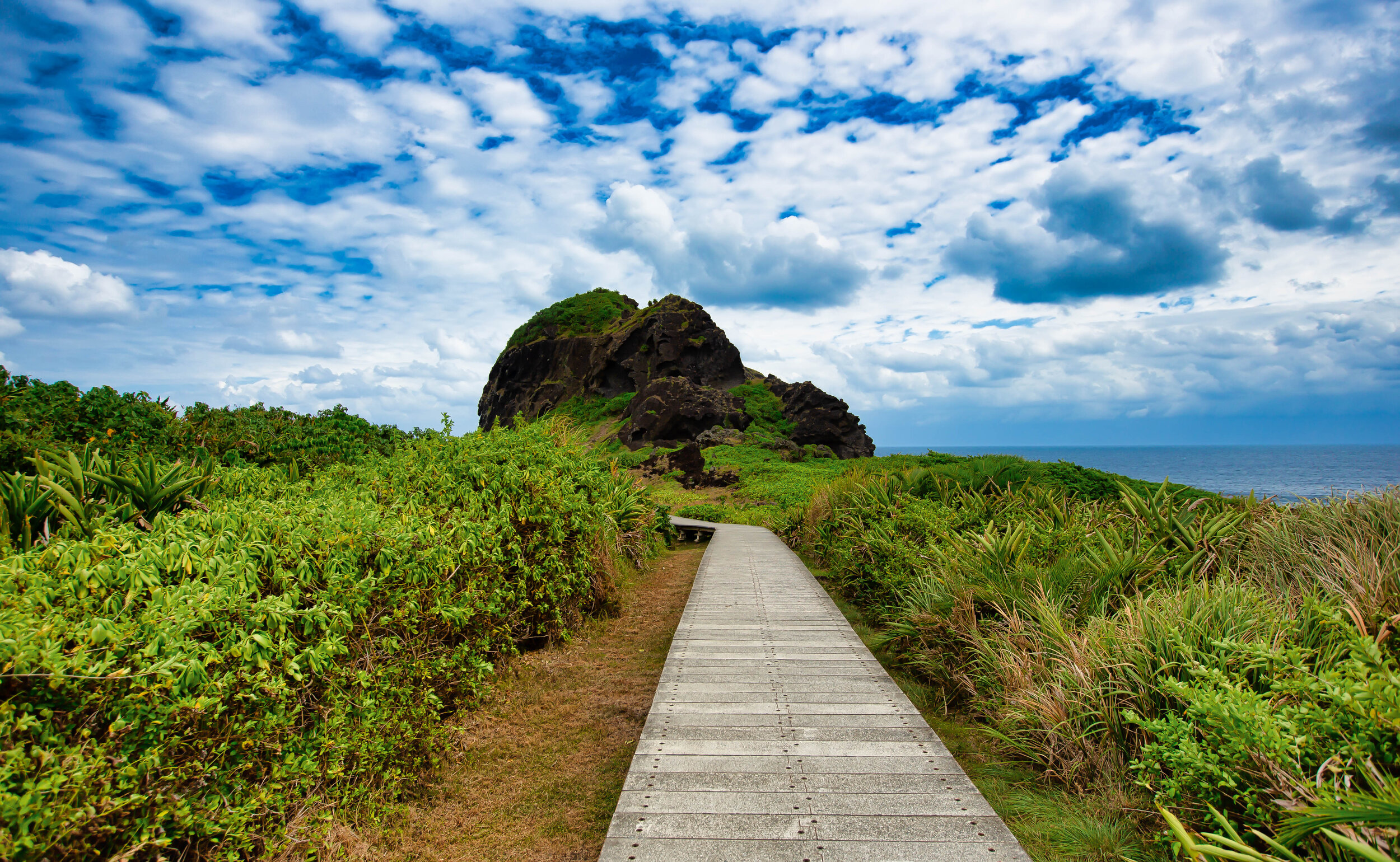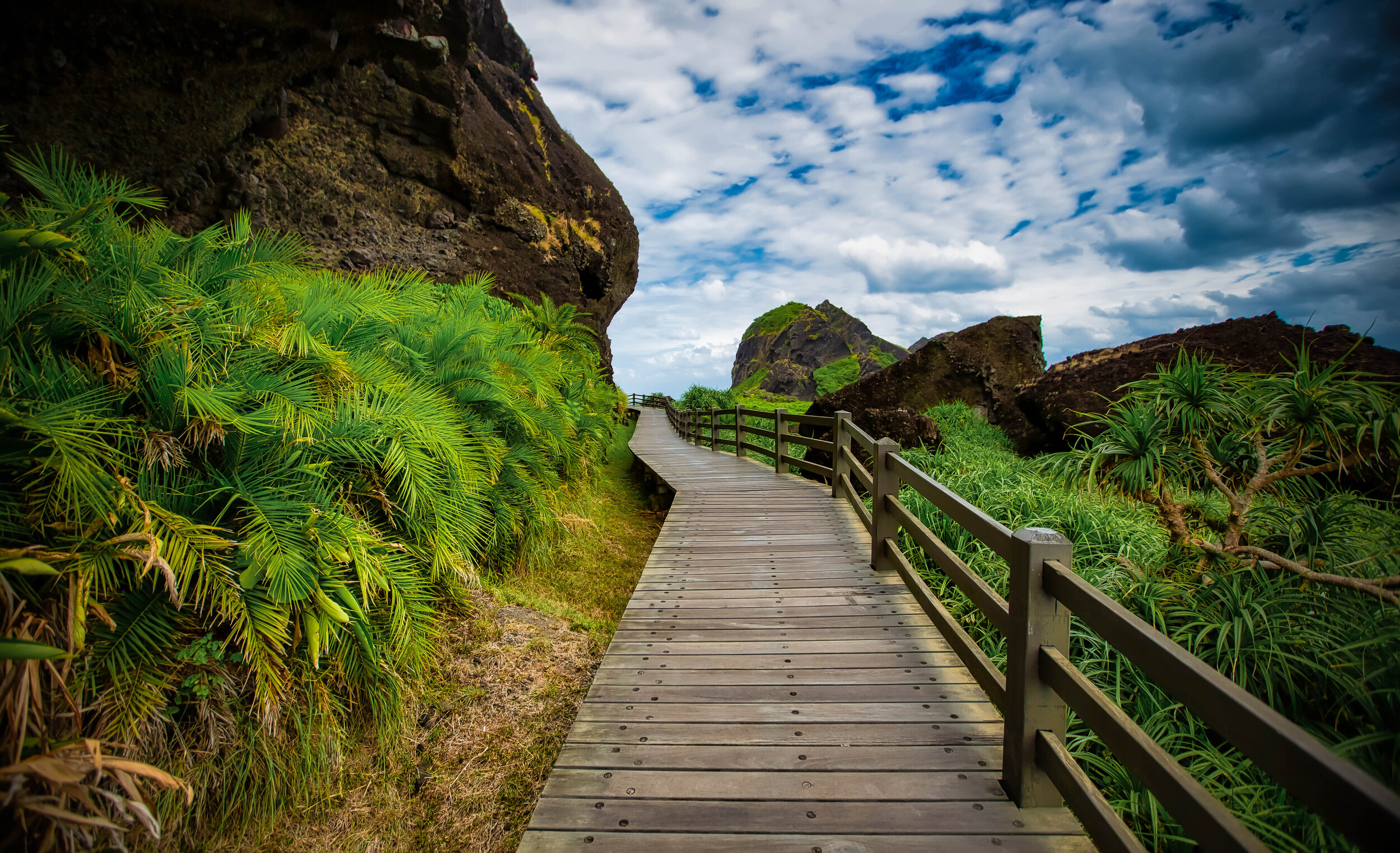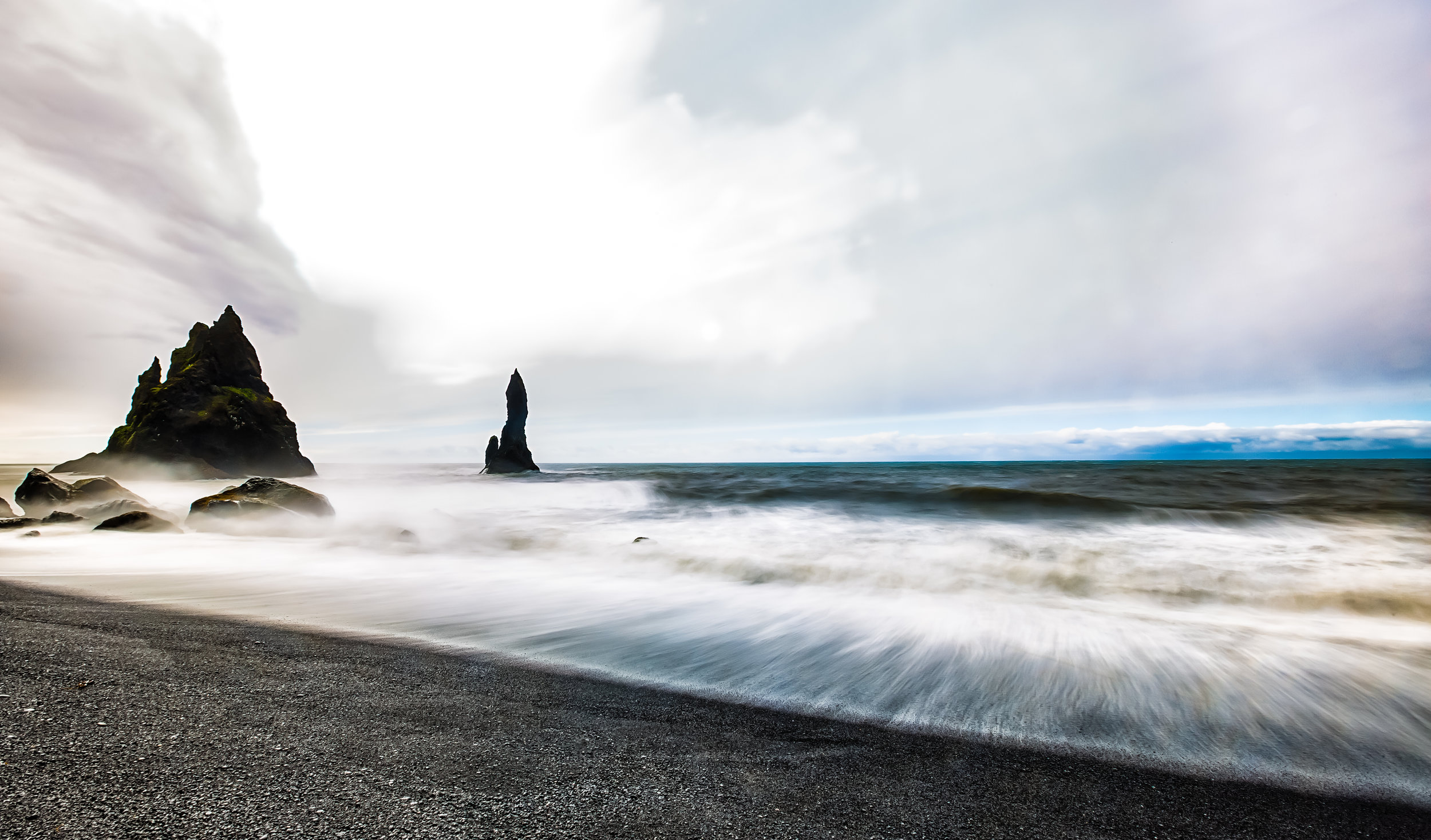A while back I was having a chat with some friends who had just returned from a vacation to the East Coast of Taiwan. We talked about some of the locations that they visited and what they enjoyed most about their trip.
When they mentioned the most beautiful location on their trip, I instantly recalled my first trip to the Taitung more than a decade ago when I was also new to Taiwan..
It was one of those early experiences that helped to cement my lifelong love affair with this beautiful country.
So when my friends mentioned that they really enjoyed visiting Sanxiantai, one of Taitung’s most popular tourist attractions, I decided to ask a bit more about their experience.
You see, the last time I visited, the network of trails on the island were still under construction and if you wanted to actually walk around, you had to be adventurous, which obviously wasn’t a problem for me.
To my surprise though, my friends replied that they just walked halfway across the bridge and then turned back.
To which I replied: “So, you didn’t actually visit Sanxiantai then, did you?”
Confused by my reply, I had to explain that the name “Sanxiantai” actually refers to the island and not the bridge, which has become an iconic image in recent years.
Unfortunately, my friends aren’t the only ones who missed out.
Quite a few travelers end up visiting the area, taking photos of the bridge and the surrounding landscape and then moving onto the next destination.
If you ask me, that’s a shame - Sanxiantai is a geologically rich and historically significant island that provides tourists with some great photo opportunities, as well as the ability to quickly walk around and learn about its unique coastal ecology.
Sanxiantai (三仙台)
“Sanxiantai” as the island is known in both Chinese and English, is an ecologically rich off-shore island located in Northern Taitung’s Chenggong Township (成功鎮), and is one of the most popular tourist attractions on the east coast.
The island was originally named Nuwalian (最東之地) and Pisirian (牡羊之地) in the Indigenous Amis language (阿美語), translating as “The Far East” and “Shepherds Land”, respectively.
Interestingly, it has also been referred to as Diaoyu Island (釣魚台) by early Chinese immigrants, which was a nod to its historical importance for local fishers.
Note: “diàoyú” (釣魚) in Chinese is the verb “to fish” while “tai” (台) is a “platform.”
What’s notable about this is that there are a group of islands located between Japan and Taiwan that are also referred to as the Diaoyu Islands (釣魚台) or the Senkaku Islands (尖閣群島) that have been the subject of a decades long territorial dispute between the governments of Japan, Taiwan and China.
The current name of the island is a more recent one and is steeped in Chinese legend.
The Legend of the Three Immortals (三仙傳說)
“Sanxiantai” (三仙台) or the “Platform of the Three Immortals” gets its name from the three giant rocks that define the landscape of the small island.
According to a relatively recent tale, each of the rocks represents the footprint of one of three Taoist deities, who are said to have landed on the island at some point in their travels.
The “immortals” (仙) in particular are Li Tieguai (李鐵拐), Lu Dongbin (呂洞賓) and He Xiangu (何仙姑) and if you weren’t already aware, are important members of the much larger group of “Eight Immortals” (八仙), a source of inspiration and devotion for Taoists.
Link: Eight Immortals (八仙)
How the legend about the Three Immortals leaving their footprints on the island came about is something that I’m not really able to answer. There are disagreements about the legends as some people insist that the three giant rocks are “footprints” of the immortals while others argue that the rocks are the “immortals” themselves.
The positioning of the rocks however is an important part of the myth as stories tell of a ‘love affair’ between the only female immortal, He Xianggu and the notorious ladies man, Lu Dongbin, which ended up getting interrupted by the third-wheel on the trip, Li Tieguai, who wasn’t having any of Lu’s philandering and used his god-like powers to drive a wedge between them.
For a bit of a backstory, the Eight Immortals live on a mythological island known as Mount Penglai (蓬萊仙島), thought to be located somewhere “east” of China. Even though Sanxiantai has never been considered the mythological island, local legends insist that it was simply a resting place for the three immortals on their journey.
Although the earliest mention of the Eight Immortals is thought to have been between the Tang and Song Dynasties (618 - 1279), it wasn’t until the Ming Dynasty (明朝), when Wu Yuantai (吳元泰) wrote “The Eight Immortals Depart and Travel to the East” (東遊記) that their legend started to become popular.
Considering Taiwan is geographically “east” of China, stories like this, and of course “The Eight Immortals Cross the Sea” (八仙過海) are popular with Taoists here in Taiwan.
The story about the immortals crossing the sea to the east holds special meaning for people here considering that the legends typically focus on each of the immortals showing off their supernatural skills to help the others cross the sea. From this we get the Chinese-language idiom: “八仙過海,各顯神通” which literally translates as “The Eight Immortals Cross the Sea, Each Reveals its Divine Powers”, a metaphor for the ability to successfully work together to achieve a common goal.
If you’re visiting Taiwan and you visit a temple, it’s very likely that you’re going to see something related to the Eight Immortals, even if you don’t actually realize it.
Likewise, if you keep traveling north of the island to Hualien, you’ll eventually arrive at the “Cave of the Eight Immortals” (八仙洞), another tourist destination dedicated to the Taoist deities.
The Legend of the Chifawuan
In a legend about the island that pre-dates the tale of the Three Immortals, the indigenous Amis people have their own stories about the island, which I personally find much more interesting.
According to the Amis, the island was home to a sea-dragon named “Chifawuan” (及發烏安).
Living within a cave, the dragon was considered a protector deity for the local communities, who believed that their fortune or misfortune, were a direct result of human action.
The thing about this legend that makes it so meaningful is that the Amis people thought of the dragon as a spiritual protector of the environment, which would punish those who took too much from the land and the sea.
So, if you were a fisher and you took more than your fair share from the ocean, the dragon would appear to deal out some form of punishment.
What we can take away from this tale is an admirable lesson that has remained an important part of Taiwan’s various indigenous cultures in that there should always be an ecological balance with the environment.
As the tale goes however, the land was once home to an abundance of sea snails (大海螺), which became a prized commodity that the local people used for trading. As this ended up being a lucrative business opportunity, basic human greed took over and the population of snails on the island was quickly depleted.
The dragon was so enraged about this that it triggered a massive earthquake that created the island that we know today, which prevented people from trespassing on it.
Unfortunately, the power it took to achieve this ultimately killed the dragon.
Official government literature on the subject describes both of these tales as an example of the imaginative legends of local indigenous people and the Taoists that immigrated here and “illustrates the different histories, religions, and cultures of these two ethnic groups.”
The lessons learned from the Amis tale however remains important in a contemporary setting as humanity looks to find ways to find a better balance with our natural environment.
Geography of Sanxiantai
As mentioned above, most tourists attracted to the area come under the assumption that the name “Sanxiantai” is actually referring to the beautiful bridge that connects to the island.
The twenty-two hectare island, which prominently features three large mountain-like rocks is estimated to have formed hundreds of thousands (if not millions) years ago.
Geologists link the creation of the island to the eruption of the now-extinct underwater Duluan Volcano (都巒山層), which also formed much of what we today refer to as the East Rift Valley (花東縱谷).
Science it seems partially agrees with the Amis legend above in that Sanxiantai wasn’t always an island.
It was at one time connected to the rest of Taiwan as a headland, but thousands of years of sea activity eventually eroded away the low lying strip of land between the two.
Still, when the tide is out, if you don’t mind getting your feet wet, it’s possible to walk across the coral beach to the island.
But why would anyone bother when you have such a beautiful bridge to enjoy?
Link: 台灣東部知識單元資料庫 (National Museum of Natural Science)
Currently, the island is well-connected with a network of footpaths that have been constructed allowing visitors the opportunity to hike around the island as well as to its highest point, the Sanxiantai Lighthouse (三仙台燈塔.)
Apart from simply walking around the island, its important to note Sanxiantai is surrounded by coral reefs and has easily-accessible underwater caves that makes it a haven for tropical fish.
The area has always been a popular spot with local fishers, but recently it has also become popular with divers who come to enjoy one the underwater beauty of the island.
Whatever your preferred type of recreation, Sanxiantai is a geologically diverse island that features sea-eroded caves, rare coastal vegetation, a rocky moon-like surface, beautiful views of the Pacific Ocean and of course a great vantage point to look back at the beauty of Taiwan’s eastern coast.
Unfortunately as I mentioned above, quite a few people show up to the area to check out the beach and the bridge before heading on to their next destination.
I highly recommend that if you are visiting this area that absolutely must walk across the bridge and take some time to walk around the beautiful island as well.
Links: Sanxiantai (Taiwan Gods) | Sanxiantai (East Coast National Scenic Area)
Ba-Gong Bridge (跨海八拱橋)
Probably the highlight of most people’s visit to Sanxiantai is the famed bridge that connects the island to the rest of Taiwan. The four-hundred meter long arched bridge has become an iconic image for the east coast and any visit to Taitung would be incomplete without checking it out.
Often confused with the island itself, the bridge is actually named Ba-Gong Bridge (八拱橋), which quite literally means “Eight-Arch Bridge,” but is a name that gets little mention in English-language literature.
The construction of the bridge (and the success of Sanxiantai as a tourist attraction today) are the result of the hard work of Mr. Lee Hua-dong (李華棟), who is considered to be the Father of Sanxiantai (三仙台之父).
With the opening of Sanxiantai as a recreational tourist area after Martial Law (戒嚴時期) was lifted in 1987, the construction of a bridge became essential.
Constructed that same year, the bridge is beautifully designed and was done so in an environmentally friendly way attempting to put as little burden on environment as possible.
Designed to look like a dragon (possibly a nod to the Amis legend), the blue and red bridge also resembles the powerful ocean waves that the east coast is known for.
Prior to the construction of the bridge, the only way to actually reach the island was to wade through the water at low-tide or go across in a keep. The latter caused quite a bit of ecological damage to the coral bed, so the presence of the bridge today helps the environment by allowing tourists to walk across to the island, without negatively affecting the coral.
Although the bridge is four-hundred meters long, walking across it might take a while as it can be quite windy.
And because it’s also a great spot for taking photos!
Getting There
Getting to Sanxiantai should be rather straight-forward.
It is situated directly along the Number 11 Coastal Highway (台11線) between Hualien and Taitung, which is probably one of the busiest and most identifiable roads on the entire East Coast.
Unfortunately the island is quite far from both cities, which is why some tourists might run into trouble getting there.
Located around fifty kilometres north of Taitung City and over one-hundred kilometres south of Hualien, if you’ve got a car or a scooter, you shouldn’t have much of a problem, as it is hard to miss.
Address: #74 Jihui Road, Chenggong Township, Taitung. (臺東縣成功鎮三仙里基翬路74號)
GPS: 121.42168/23.126135
If you find yourself on the East Coast without a car or scooter however, you’re going to have to rely on public transportation, which truthfully isn’t all that convenient or reliable.
Nevertheless, you do have a few options for getting there.
From Hualien Train Station (花蓮車站) take Hualien Bus (花蓮客運) #1145.
From Taitung Train Station (台東車站) take Ting-tung Bus (鼎東客運) #8101, #8101A or #8102.
No matter what direction you’re coming from, make sure to get off at the Sanxiantai Bus Stop (三仙台站)
If you elect to take the bus option, I highly recommend you pay very close attention to the time tables linked above for each of the buses as they don’t come all that frequently.
If you’d prefer not to take a bus and waste time waiting around, there is also the option of booking a taxi for the day that will take you to Sanxiantai and some other locations for a set price.
The Taitung County Government Tourist Bureau has a list of ‘trustworthy’ drivers that are available for booking, which I’ve linked below. This method might be a bit more expensive, but if you’re traveling with friends or family, it might be a more convenient option.
Link: Taitung Taxi Tour Drivers (Taitung Tourism)
Even though Sanxiantai is a bit of a distance from Taitung City, it is still one of those tourist destinations that you absolutely have to visit when you’re on the East Coast.
With this one I don’t feel like I have to do too much pushing as the iconic bridge has become an iconic image used to promote Taiwan to the rest of the world.
Unfortunately, if you hadn’t already noticed, the weather on the day I visited was pretty awful.
So, don’t be surprised if you see this space updated sometime in the future with prettier photos.

































